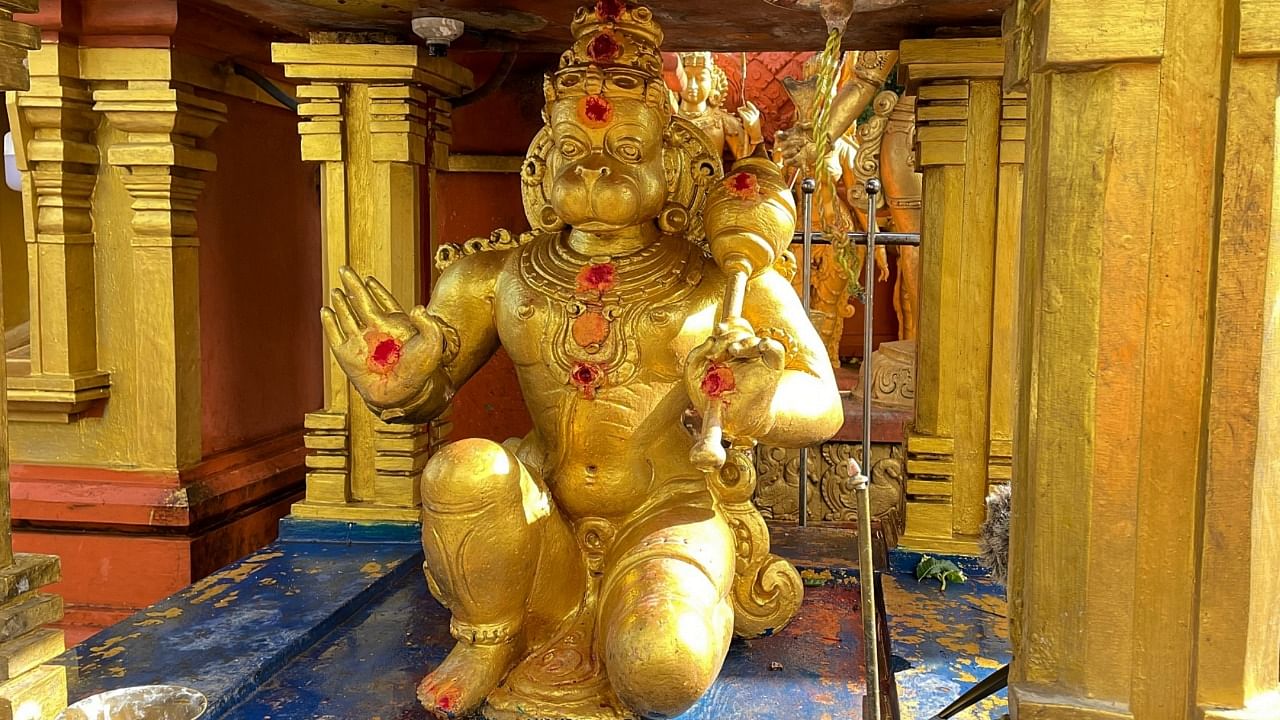
I was six when I first learnt about Sri Lanka as the land of Ravana. Every Sunday, my family, like every other family in India, would be glued to the TV to watch Ramayan, that era's only epic Indian series to be broadcast on Doordarshan, the solo government-run channel we had access to.
Arun Govil and Deepika Chikhlia Topiwala, who played the deities, gave Ram and Sita a human face and wooed the audience with their sincere performances. Mahabharat was released a year later, and 35 years later, my recall of both epics remains as fresh as it was when I first watched them. Every year, as I travel over the blue waters to Sri Lanka, the aerial sights bring back memories of the Ram Sethu, or Adam's Bridge, which is said to be buried beneath the waves yet mythologically connects India and Sri Lanka.
For Indians visiting Sri Lanka, it's hard to miss the Ramayana trail that follows through many of its cities. Sri Lanka boasts around 50 Ramayana sites, ranging from Sita's imprisonment to the battlegrounds where Ram defeated Ravana, the ten-headed demon-king. What's more impressive is that the names of these locations haven't changed. Here are the five most prominent Ramayana trail sites that will bring back memories of the TV serial you may have watched years ago.
Anjaneyar Temple, Colombo
Ram Setu was once the only link between Rameshwaram, India, and Mannar, Sri Lanka. However, as Colombo is now the official gateway to Sri Lanka, you might want to begin your Ramayana Trail by visiting Anjaneyar Temple in the city. Built by Swamy Chandrashekar, this Panchamuga temple in Colombo is dedicated to Lord Hanuman in his Panchamuga form, meaning five faces. Anjaneyar is also the only temple in the world to keep a chariot of Anjaneya. Lord Shiva assumed the appearance of Hanuman in the Ramayana to destroy the mighty King Ravana, according to the Ramayana Yatra. Another relevant site is the Vibhishana Palace, on the outskirts of Colombo, which is now a Buddhist temple with several murals of Buddha gracing the walls.
The Rock Fortress of Sigiriya
According to legend, this UNESCO world heritage site, referred to as the world's eighth wonder, was once the majestic palace of King Ravana. It is said to be built in pure gold by Kubera, the God of wealth. Many historians believe that Sigiriya, Ravana's astonishing palace, used to have an elevator because there were roughly 1,200 stairs to the top. Several caves can be found near the bottom of this rock plateau, and some stories claim that Ravana imprisoned Sita in one of these caves. The cave walls still preserve vividly coloured paintings illustrating scenes from the times, thus, this claim could be accurate.
Seeta Amman Temple, Nuwara Eliya
Seetha Amman Kovil in the town of Sita Eliya is a colourful Hindu temple near Hakgala Botanical Garden, the former Ashok Vatika. This is where Sita was incarcerated and prayed for Ram to come and rescue her, according to the Ramayana. The footsteps of Lord Hanuman and Ravana's elephant are visible on the rocks facing the creek. As recounted in the Vishnu Purana and Valmiki's Ramayana, Ashok Vatika was a garden, also mentioned in Sundar Kand in Tulsidas' Ramacharitamanas. Sita Jharna, a location where Sita bathed in a stream in Sita Eliya, is another associated site worth visiting.
Koneswaram Temple, Trincomalee
The temple of the thousand pillars, Koneswaram (Thirukonamalai Konesar), is one of the most sacred of Sri Lanka's Pancha Ishwarams. The Ramayana describes it as a famous bay temple on the island. Many Hindu tourists visit this temple in Trincomalee on the Ramayana trail. The black granite megalith of the Koneswaram Temple, which stands above the cliffs on Trincomalee's eastern shore, is covered with elaborate sculptural bas-relief ornamentation, and the gold-plated gopuram towers were added throughout the mediaeval time.
Ravana Waterfall and Caves
Ravana Alla, Sri Lanka's widest waterfall, is one of the top sites to visit in Ella, a small, misty tea town in Badulla, named after the legendary monarch. This waterfall, which cascades from an oval-shaped concave granite outcrop, is about 82 feet tall. According to folklore, Ravana abducted and hid Sita in the caves behind this waterfall. She bathed in a pool created by the water coming from the waterfall.
(Veidehi Gite is the founder of KrazyButterfly and a former advertising professional who writes on travel, luxury, food, fashion, and fitness)